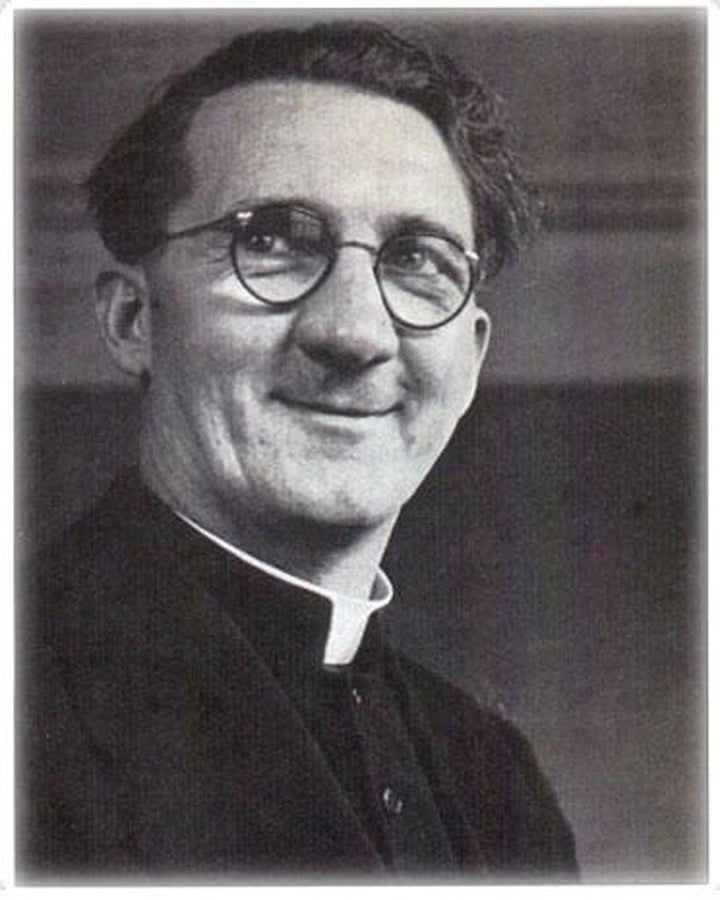
Four years ago I came across a story that would fascinate and intrigue me in equal measure. It was the story of Monsignor Hugh O'Flaherty, an Irish priest based in the Vatican who defied the Nazi command during World War II. Using a combination of cunning, audacity and bravery he hid thousands of Jews and Allied soldiers in safe houses around Rome.
O'Flaherty's rival was SS Lieutenant Colonel Herbert Kappler who watched the Irishman's every move. Kappler tried to kidnap the troublesome priest and even planned to murder him.
O'Flaherty managed to stay one step ahead of his nemesis with a mixture of good fortune and planning. The Monsignor helped to set up the 'Rome Escape Line' which used fake IDs, disguises and a labyrinth of secret communication channels. During the German occupation of Rome the two men played a deadly game of 'hide and seek' and it is estimated that O'Flaherty helped to save the lives of around 6,500 people.
My research for the book began in 2008. It was a journey that would span many countries including America, Italy, Ireland and the UK and Germany.
In 2009, I travelled to Rome and walked in O'Flaherty's footsteps across the city to the safe houses he used and to places where he met supporters of his escape line. In Ireland, I visited the homes of O'Flaherty's friends and relatives and slowly I began to build up a picture of a man who was a lifesaver to thousands. In London, at the National Archives centre in Kew, I was able to read official documents that detailed how the escape operation was run. In Germany, research revealed Kappler's early life and after visiting the military archives in Maryland outside Washington I discovered how the Germans controlled Rome.
By 2009, I knew I had enough detail to write about O'Flaherty's and Kappler's wartime battle. As my research continued more intriguing details came to light. I learned more about a bomb attack in wartime Rome when the Resistance killed 33 German soldiers and Adolf Hitler was enraged. He demanded revenge that in his words would 'make the world tremble,' and Herbert Kappler was instructed to draw up plans.
In the Ardeatine Caves, a labyrinth of tunnels outside the city, Kappler brought hundreds of men, women and children in cattle trucks and he began a series of executions. Eventually 335 people would be killed in one of the worst massacres committed on Italian soil during the Second World War. At the war crimes trial Kappler was sentenced to life imprisonment with no parole. However, this is not the end of the narrative, merely the beginning of a new chapter.
During his captivity, Kappler wrote to his former rival and asked him to come and visit. Amazingly, the Irishman agreed to go and see a man who had plotted to kidnap him and at one stage wanted to murder him. Without hesitation, O'Flaherty took up Kappler's invitation and in prison the two men chatted over coffee. Slowly a friendship grew and Kappler, who had been raised as a Protestant eventually asked O'Flaherty to convert him to Catholicism which the Monsignor duly did.
Kappler's conversion and his post war relationship with O'Flaherty adds another intriguing dimension to this story. After he became ill Monsignor O'Flaherty eventually retired to Ireland and in October 1963 he died and was buried in his beloved Country Kerry. He was awarded a CBE by the British government and was given a US Medal of Freedom which is rare for a non- American.
As I discovered during my research this fascinating story does not end with the Monsignor's death. Kappler had been told by the Italian authorities that his war crimes meant he would never experience freedom. By 1977, he was being treated for cancer in a military hospital in Rome and his wife masterminded his escape. She managed to get him out of his room, hid him in her car and then drove out of the hospital complex through the guarded gates. She then drove him away from Rome - the very city he had had terrorized as a Gestapo chief some three decades earlier. Within hours Herbert Kappler was back in West Germany.
He was now a wanted man and the Italians were playing their own particular version of "hide and seek." It was the final twist to a remarkable story.
Stephen Walker is the author of Hide & Seek: The Story of the Irish Priest in the Vatican who Defied the Nazi Command [Lyons Press, $24.95].